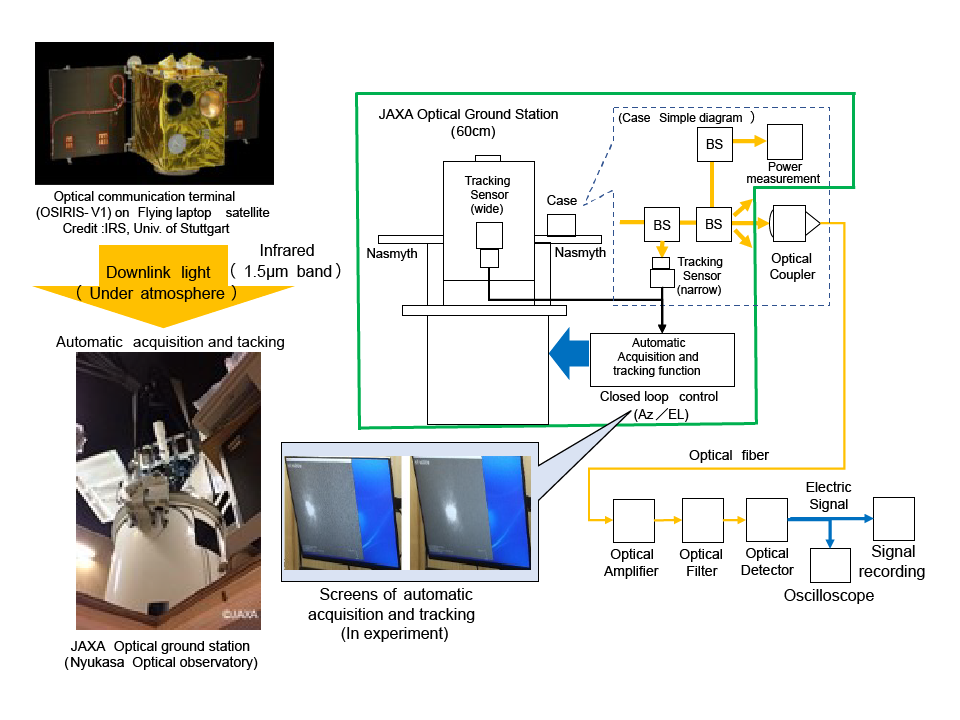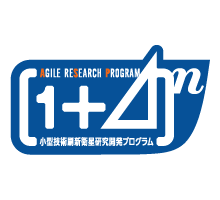The Japan Aerospace Exploration Agency (JAXA) successfully demonstrated automatic acquisition and tracking technology in optical communication experiments of 1.5 band between the optical ground station (60cm) at JAXA Nyukasa optical observatory in Ina city, Nagano prefecture and the OSIRIS optical communication terminal of the Institute of Ccommunications and Navigation of German Aerospace Center (DLR) on the Flying Laptop satellite of the University of Stuttgart.
JAXA has been conducting the research and development of technologies which receives the weak downlink light from a satellite by a small telescope of an optical ground station and automatically acquires and tracks it by the image processing technology for future practical applications for high-speed optical communications between space and ground.
Based on our joint research between JAXA and DLR*1, we conducted optical communication experiments between the JAXA optical ground station (60cm) and the optical communication terminal (OSIRIS-V1*2 ) on the small satellite (Flying Laptop), built and operated by the University of Stuttgart. In this experiment, it was confirmed that the weak downlink light was automatically acquired and very accurately tracked by our developed image processing technology and the downlink light was received and consequently the automatic acquisition and tracking technology was realized.
In this automatic acquisition and tracking technology, an automatic function of discriminating, acquiring, guiding the light from a high-speed flying object to the center of field of view and continuing to track it sequentially by controlling the azimuth and elevation of the telescope through tracking sensors for wide and narrow angles on the optical ground station, was demonstrated by our developed image processing technology. At the optical ground station, a unique fiber with a larger incident aperture and a mechanism to amplify received light are incorporated to realize a more compact receiver system.
Optical communication technology between space and ground is expected to be utilized in high-speed communications for commercial satellites and the moon and planetary missions as communication measures of high-capacity and high-speed communications without constraints of frequency bandwidth and others.
It is expected that demonstrated technology will contribute to expansions of the future utilization by downsizing the receiver system of the optical ground stations and reducing operational burdens through it and also it is considered it can be further used for other applications, because of automatic acquisition and tracking of the light from high-speed flying objects. We will continue to work on acquiring necessary technologies, including two-way optical communications.

- *1
- JAXA and DLR have concluded an joint research of fundamental technologies of tracking and transmissions to realize optical direct communications between space and ground, based on an implementation agreement in 2019 related for cooperation in the field of optical direct communications. we will plan to share the results of experiments and to start future experiments,
- *2
- Optical communication terminal (OSIRIS-V1) is one of a series of Optical Space Infrared Downlink System (OSIRIS) of the Institute of Communications and Navigation of German Aerospace Center (DLR) on the Flying Laptop satellite of the University of Stuttgart.








